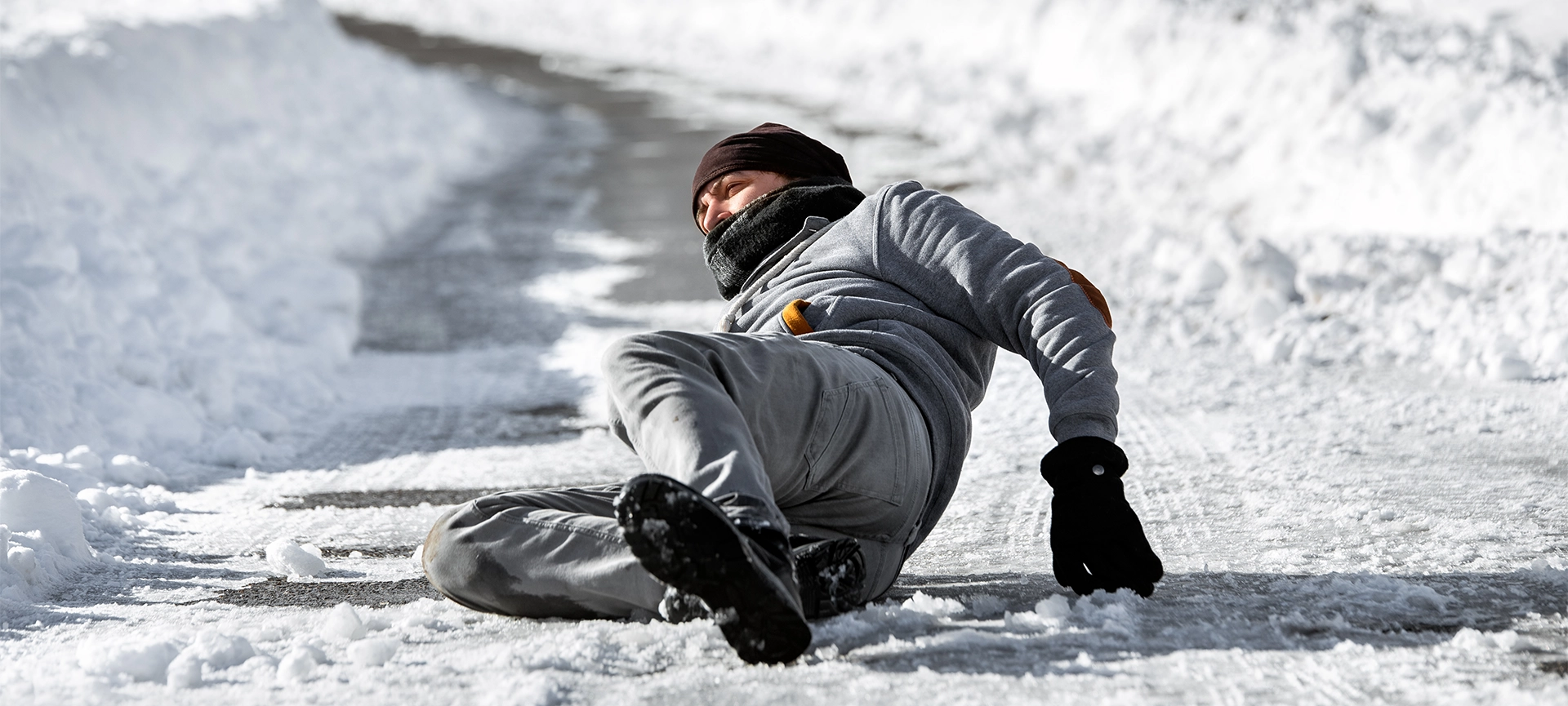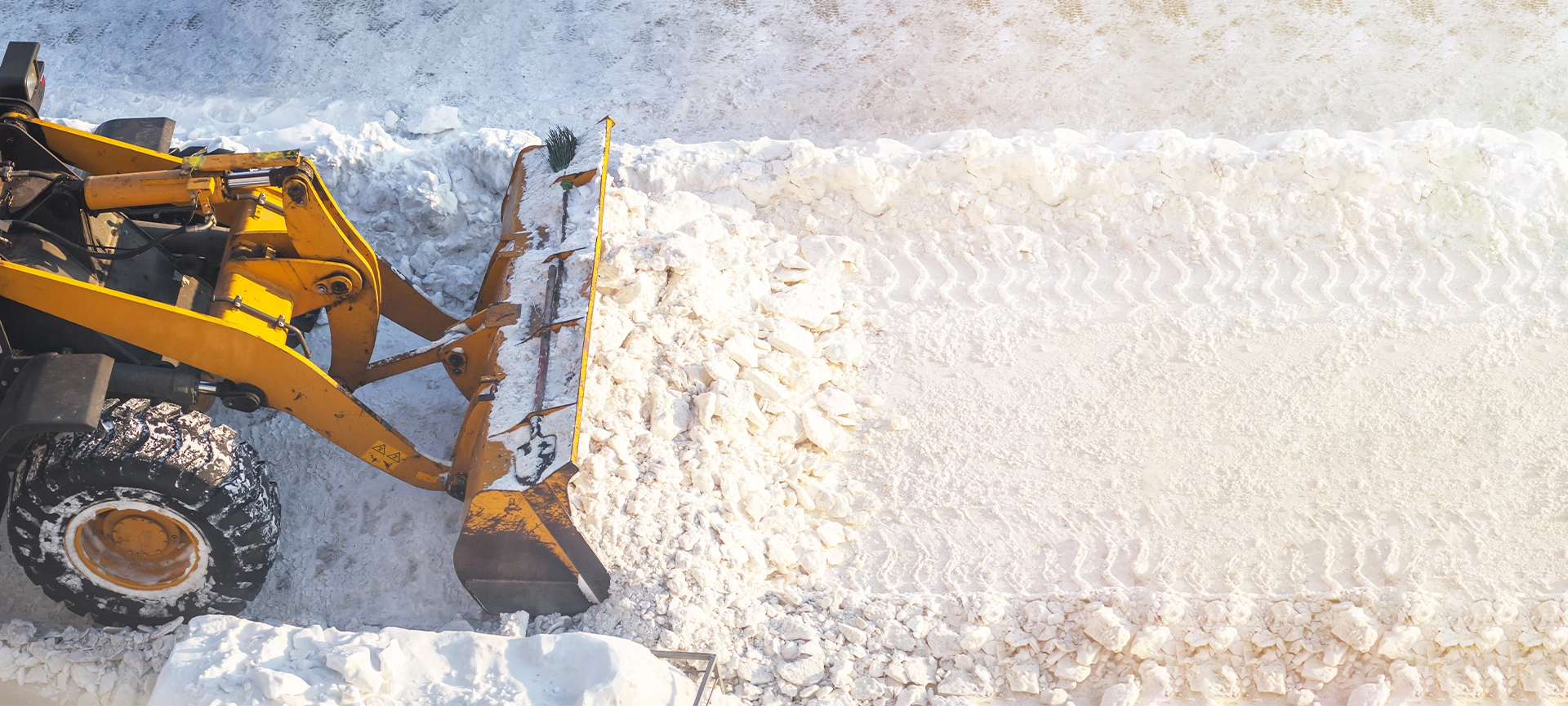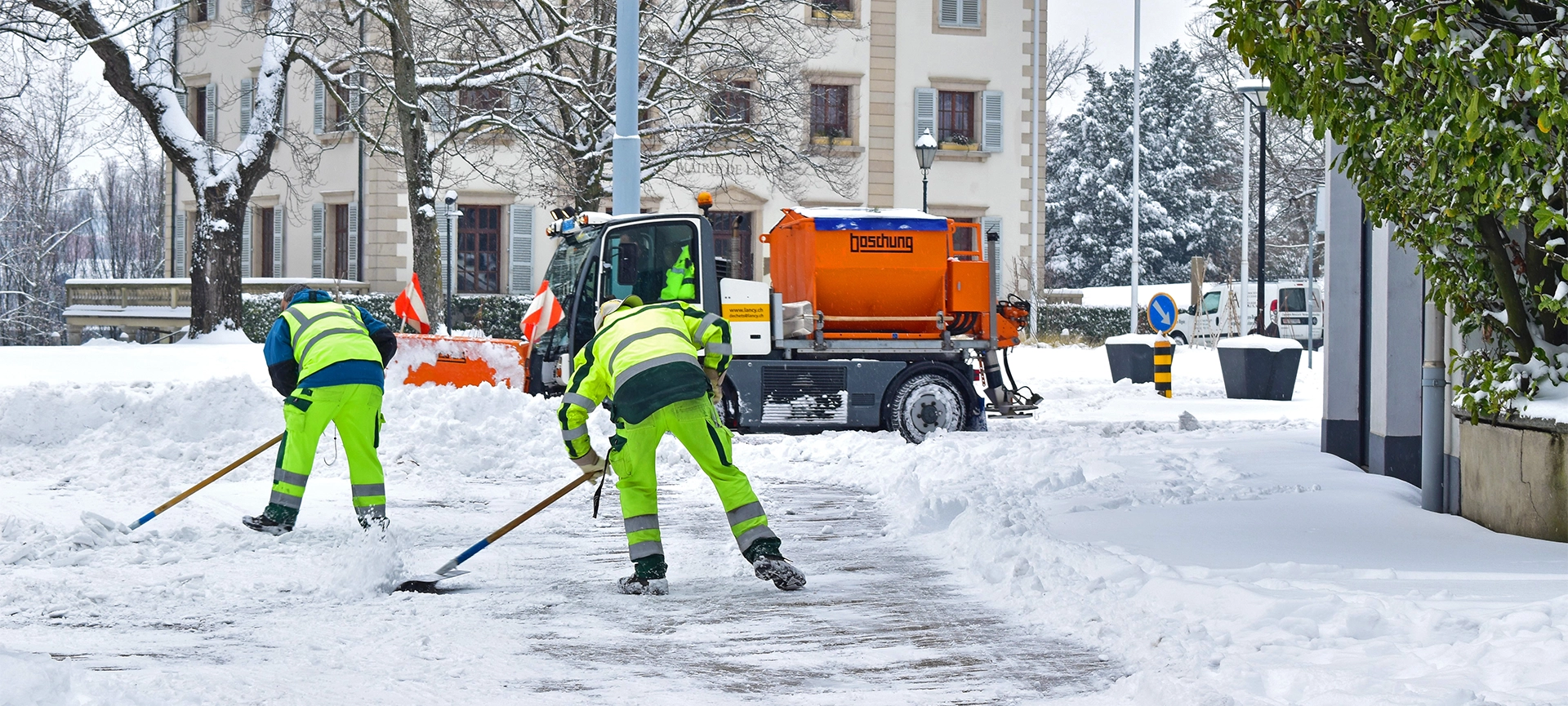
The Americans with Disabilities Act (ADA) requires that public spaces, including commercial properties, remain accessible to people with disabilities year-round. While many business owners focus on accessibility during warmer months, winter introduces a unique set of challenges. Snow and ice can block wheelchair ramps, narrow walkways, and create slip hazards that make your property unsafe and non-compliant.
Professional snow removal services play a critical role in meeting ADA standards during cold weather. They do more than just plough parking lots; they ensure that all mobility routes remain safe, clear, and usable for everyone.
This guide explains how these services help you stay ADA compliant in winter, the risks of neglecting accessibility, and what to look for when hiring a contractor.
Related Article: Is De-Icing Enough? When You Need Full-Service Ice Management
Understanding ADA Winter Accessibility Requirements
The ADA outlines clear expectations for accessible paths of travel, including sidewalks, entrances, ramps, and parking spaces. In winter, these areas must remain free of snow, ice, and obstacles to allow safe passage for individuals using mobility devices, canes, or walkers.
Key areas that require special attention include:
- Accessible parking spots and access aisles: Must be cleared to full width with no snow piled in access zones.
- Curb ramps and wheelchair ramps: Must be ice-free and have proper traction.
- Entrances and exits: Must be fully cleared and unobstructed.
- Sidewalks and walkways: Must maintain the minimum width required for ADA compliance (36 inches in most cases).
Failure to maintain these areas can result in safety risks and legal penalties.
Why Snow and Ice Pose a Compliance Risk
Snowfall doesn’t just make surfaces slippery; it can completely block access for individuals with disabilities. Even a thin layer of ice on a ramp can prevent safe use of a wheelchair.
Common winter hazards that impact ADA compliance include:
- Reduced walkway width from snow piles.
- Blocked curb cuts where ploughs push snow into street access points.
- Ice buildup on slopes, making them dangerous or impassable.
- Hidden trip hazards under packed snow.
These issues can lead to injuries, complaints, and costly fines if your property is inspected.
Related Article: Top 7 Mistakes Businesses Make with Snow and Ice Management
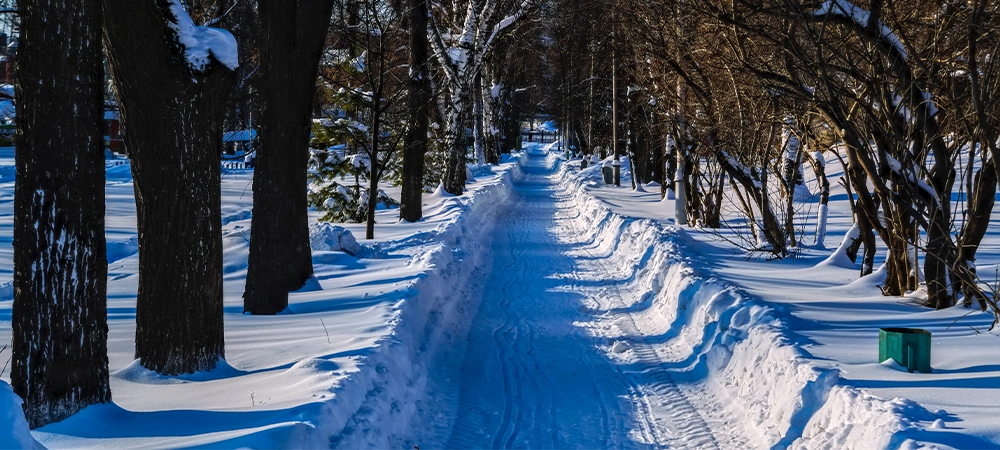
How Professional Snow Removal Services Protect Accessibility
A reliable snow removal service has both the equipment and expertise to address these hazards promptly and thoroughly. Here’s how they help keep your property ADA compliant:
1. Rapid Response to Snowfall
Time is critical in winter maintenance. Many providers offer automatic dispatch when snow accumulation reaches a set threshold. This ensures that accessible routes are cleared before customers or employees arrive.
2. Proper Clearing of Accessible Routes
Professionals understand that ADA compliance isn’t about just “ploughing once.” They are cleared to full width, including access aisles, curb ramps, and all primary pedestrian pathways.
3. Ice Control for Safety
Clearing snow is only part of the job. Applying de-icing materials, such as treated salt or environmentally friendly alternatives, helps prevent refreezing, especially on slopes and ramps.
4. Continuous Maintenance During Prolonged Storms
In heavy snow events, contractors return multiple times to keep routes clear, reducing the risk of overnight ice buildup.
5. Strategic Snow Placement
Instead of pushing snow into access points, trained crews pile it in designated areas where it won’t block walkways, ramps, or sightlines.
Benefits of Staying ADA Compliant in Winter
Maintaining accessibility in the snow season isn’t just about avoiding fines; it’s a business advantage.
- Improved safety: Reduces the risk of slip-and-fall accidents for everyone, not just individuals with disabilities.
- Customer satisfaction: People notice when you take steps to keep your property safe and easy to navigate.
- Legal protection: Proactive maintenance helps prevent lawsuits and supports your defence if a claim arises.
- Positive reputation: Demonstrates that your business values inclusivity and accessibility year-round.
The Cost of Non-Compliance
Failing to maintain accessible routes in winter can lead to:
- Fines and legal action: ADA violations can result in significant penalties.
- Personal injury claims: Slip-and-fall incidents can cost thousands in settlements.
- Loss of customers: Poor accessibility sends a message that certain customers are not welcome.
- Increased insurance premiums: Frequent claims lead to higher rates.
Related Article: How to Audit Your Property for Winter Safety Before the First Snowfall
What to Look for in a Snow Removal Service for ADA Compliance
Not all snow removal companies prioritize accessibility. When choosing a contractor, consider the following:
- Experience with commercial properties: They should understand ADA requirements and be able to demonstrate compliance strategies.
- Detailed service agreements: Contracts should outline response times, snow depth triggers, and areas to be cleared.
- Proper equipment: Sidewalk machines, snow blowers, and ice control tools suited for narrow and sloped areas.
- Ice management plan: Regular application of anti-icing agents and follow-up visits during freeze-thaw cycles.
- Documentation: Logs of service times and actions taken can be vital in defending against claims.
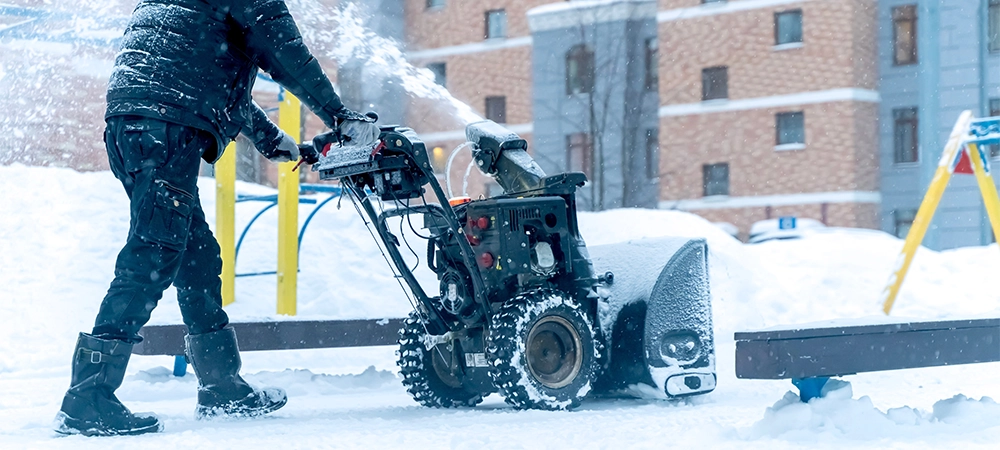
Best Practices for Property Owners
Even with a professional service, property managers should take steps to maintain compliance between visits:
- Inspect daily: Check all access points after snowfall or temperature changes.
- Communicate with staff: Ensure they know how to report hazards quickly.
- Post temporary signage: Alert visitors if a section is temporarily closed for clearing.
- Keep de-icing materials on hand: Address minor spots between service calls.
Green Side Up Contracting’s Winter Maintenance Approach
In the Greater Toronto Area, Green Side Up Contracting offers commercial snow removal as part of their property maintenance services. Our crew focuses on safety and compliance, clearing walkways, ramps, and parking lots with specialized equipment. We also provide ongoing maintenance during storms and use environmentally responsible de-icing products to protect both users and landscaping.
Final Steps to Ensure Winter Accessibility
To stay ADA compliant in winter:
- Partner with a commercial snow removal service that understands accessibility laws.
- Include clear expectations for snow and ice removal in your contract.
- Monitor conditions regularly and communicate with your contractor.
By making accessibility a priority, you protect your customers, reduce legal risks, and build a reputation for inclusivity that lasts well beyond the winter season.
Keeping Accessibility Clear Through Every Snowfall
Winter accessibility isn’t optional but a legal, safety, and customer service priority. By working with a snow removal team that understands ADA requirements, you can keep every ramp, walkway, and parking space safe for all visitors, no matter the weather.
Don’t wait for the first storm. Secure your winter snow removal plan today. Contact us today for a free consultation and ensure your property stays ADA compliant all season.


